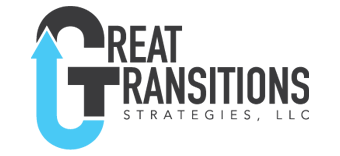“She is so much stronger in her team leadership than she gives herself credit. She is the one leading the team, although she is doing it pretty quietly.”
“He has no idea how he comes across.”
“If he knew what everyone else thinks about his one-on-one meetings, he would be disappointed.”
Can you relate to any of the above statements or is it possible one of the statements describe you? The common thread: the individuals are not self-aware. They do not understand their capability, how they come across, or the impact they are having on others in the workplace.
Suppose one of those statements described you, would you want to know? How can you develop self-awareness without getting direct verbal feedback? My experience with clients is that it takes deliberate practice.
How to get the data? In working with leaders to get better at their self-awareness we work on gathering data in three areas: Values, emotions, and behaviors. A little description on each.
Values are the beliefs held by every individual that are most important. Those beliefs provide motivation, define what is right or wrong, and how one should act. The fulfillment or violation of values triggers strong emotions. We therefore feel our values with the emotion it evokes. Lastly, we all have behaviors that we adhere to and expect others to adhere to when fulfilling a value.
More simply:
Values = motivation
Emotions = how you feel about the adherence to a value
Behavior = the focus of an individual’s action and energy to fulfill a value
Motivations drive behaviors, the actions at the start of this article are being driven by the values of the individual. To build a better understanding of your behaviors, explore your values.
Let’s start. What motivates you? A typical answer is, doing things I am good at or like to do. Therefore, examine your tendencies, likes, strengths, and what makes you happy. Here are several assessments/surveys that I regularly use to help build that understanding: Strength Finders 2.0 now also known as Clifton Strengths Finders by Gallup. VIA character strengths prioritizes your character strengths. The Authentic Happiness assessment, implicit bias assessment and Angela Duckworth’s Grit Scale can be enlightening. This list just scratches the surface, a simple google search will reveal more. I also use formal assessments such as Emotional Intelligence and The Hogan Assessment suite to provide a wealth of data to an individual.
So, you took some assessments and started building your self-awareness picture. Usually this is not earth shattering but reaffirms and raises your awareness of data you already knew. Now how about building to the skills to assess yourself in real time. I call this method, “Being a spectator of yourself”. This is learning to be engaged with an individual while monitoring and assessing yourself simultaneously. The concept is simple, the execution takes some practice.
We are immersed in our own perspective, this practice has you assess yourself from other perspectives. Here is how to start. During personal interactions consider three other perspectives:
- the person you are interacting with
- a third party (a boss, peer, or subordinate) observing the interaction
- a fly on the wall seeing the interaction at a distance
If you took a few seconds during an interaction to consider one or more of the above, how might it inform you? Use these three questions to assist you:
- What is the impact I am having on this individual?
- What would my boss/peer/direct reports see if they observed this interaction?
- What would an individual not related to the situation observing this interaction tell me?
Using these or similar questions to evaluate others perspectives has created a mindset of analyzing one’s behavior. It has made leaders I worked with to pause, assess their motivations, get emotions in check, and be deliberate about behaviors.
Assessments, coupled with reflection, and a methodology to gain real time feedback has proven to be an invaluable tool to build self-awareness.
How might you develop and incorporate this skill into your toolbox?






